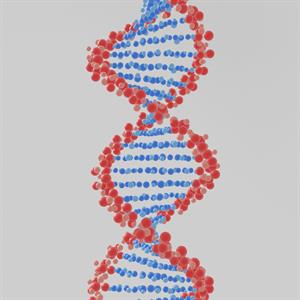
PUMPA - SMART LEARNING
எங்கள் ஆசிரியர்களுடன் 1-ஆன்-1 ஆலோசனை நேரத்தைப் பெறுங்கள். டாப்பர் ஆவதற்கு நாங்கள் பயிற்சி அளிப்போம்
Book Free Demo The following summer, after his freshman year at Harvard University, Ebright went back to the laboratory of the Department of Agriculture and did more work on the hormone from the gold spots. Using the laboratory’s sophisticated instruments, he was able to identify the hormone’s chemical structure.
A year-and-a-half later, during his junior year, Ebright got the idea for his new theory about cell life. It came while he was looking at X-ray photos of the chemical structure of a hormone.
When he saw those photos, Ebright didn’t shout, ‘Eureka!’ or even, ‘I’ve got it!’ But he believed that, along with his findings about insect hormones, the photos gave him the answer to one of biology’s puzzles: how the cell can ‘read’ the blueprint of its DNA. DNA is the substance in the nucleus of a cell that controls heredity. It determines the form and function of the cell. Thus DNA is the blueprint for life.
Ebright and his college room-mate, James R. Wong, worked all that night drawing pictures and constructing plastic models of molecules to show how it could happen. Together they later wrote the paper that explained the theory.
Explanation:
During that summer, after completing his first year at Harvard University, Ebright returned to the Department of Agriculture's laboratory to continue his research on the gold spots. Ebright then used the lab's specialised equipment to determine the hormone's chemical structure. After one and a half years, he got the idea for his new theory about cell life during his junior year (a student in their third year of study). He got the idea of cells when he looked at X-ray photos of the chemical structure of a hormone.
When Ebright saw the X-ray photographs, he did not react to them. He didn't exclaim, 'Aha!' or even he had found it. He didn't become thrilled about his discovery, but he knew that his years of research on insect hormones had answered one of biology's mysteries. It had solved the puzzle of how cells read their DNA code. In addition, Ebright also found that the DNA is in the nucleus of a cell that controls heredity. Moreover, it determines the form and function of a cell. Hence, DNA is the blueprint of life.
When Ebright saw the X-ray photographs, he did not react to them. He didn't exclaim, 'Aha!' or even he had found it. He didn't become thrilled about his discovery, but he knew that his years of research on insect hormones had answered one of biology's mysteries. It had solved the puzzle of how cells read their DNA code. In addition, Ebright also found that the DNA is in the nucleus of a cell that controls heredity. Moreover, it determines the form and function of a cell. Hence, DNA is the blueprint of life.

DNA-the blueprint of life
After finding that, Ebright and his college roommate, James R Wong, worked all night drawing pictures. In addition to that, they had constructed different plastic models of molecules to showcase how the cells work. After that, they started working on a paper about how the cell works. It was made to showcase that they had found something new in the whole world.
After finding that, Ebright and his college roommate, James R Wong, worked all night drawing pictures. In addition to that, they had constructed different plastic models of molecules to showcase how the cells work. After that, they started working on a paper about how the cell works. It was made to showcase that they had found something new in the whole world.
Meanings of the difficult words:
| S.No | Words | Meanings |
1 | Puzzle | A situation that is difficult to understand |
2 | Theory | A formal statement of the rules on which a subject of study is based or of ideas that are suggested to explain a fact or event or, more generally, an opinion or explanation |
Reference:
National Council of Educational Research and Training (2007). The Making of a Scientist- Robert W. Peterson(pp. 32-38). Published at the Publication Division by the Secretary, National Council of Educational Research and Training, Sri Aurobindo Marg, New Delhi.